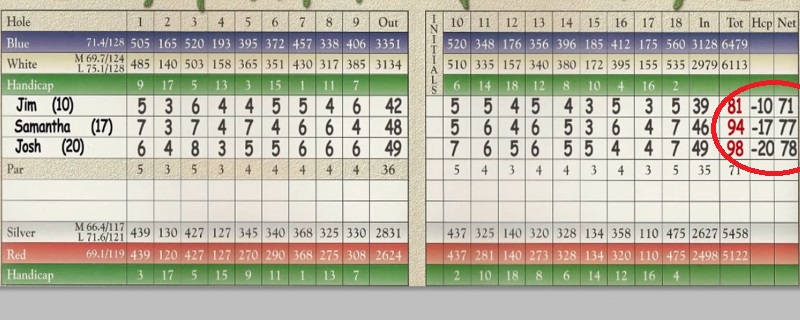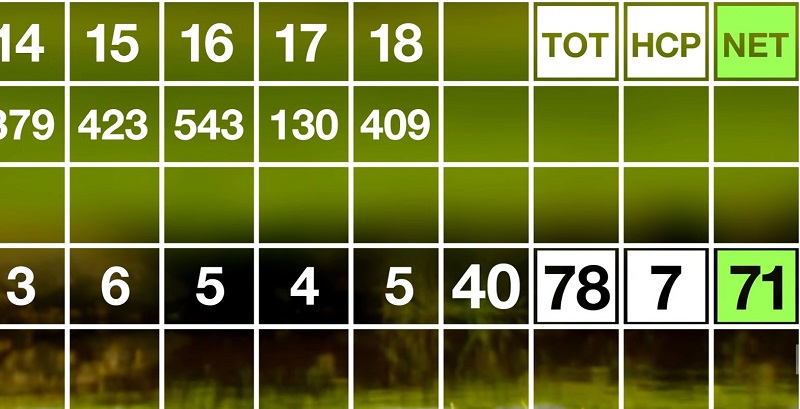Golf is a game of skill, strategy and precision. And among the various formats of the sport, stroke play has become one of the most popular. In stroke play, players compete against each other and the golf course to achieve the lowest score possible on each hole. It differs from alternative formats such as match play or four-ball play in that it rewards consistency rather than individual holes won or lost.
This article will explore what Stroke Play in golf is, how scoring works, how handicaps are taken into account and why decision-making and strategy are so important for success in this format.
What Is Stroke Play In Golf And Why Is It So Popular In Golf?
Stroke play, also known as medal play, is a scoring system in golf that has garnered significant popularity due to its inherent competitiveness and simplicity. In stroke play, the golfer aims to complete the entire course or a specific number of holes with the fewest strokes possible.
Stroke play encourages players to enhance their ability to hit precise shots and develop crucial problem-solving techniques to overcome difficult course conditions.
This format is widely embraced by amateur golfers and professionals, with prestigious tournaments such as the U.S. Open and the Masters Tournament showcasing the finest golfers in the world, battling it out in stroke play to claim victory.
Ultimately, stroke play captures the essence of golf as a sport that tests players’ physical and mental prowess, creating an engaging and exciting experience for both participants and spectators.
How Scoring Works In Stroke Play?
As the name implies, this type of play uses individual strokes per hole. The goal is to finish each hole in as few strokes as possible. The total score for the round or tournament is the sum of the scores on each individual hole. In order to keep track of a player’s progress during a round, each shot taken by the golfer is counted as one stroke. A score of one over par (bogey) would be recorded as a score of one, two over par (double bogey) would be recorded as two, and so on. The total number of strokes taken to complete the round is then compared to the number of strokes assigned to each hole; the difference between these numbers is called the player’s net score.
A net score that is less than 0 indicates that the player has shot a score lower than par. If a player’s net score is equal to 0, then he or she has matched the assigned number of strokes for that hole. A positive net score indicates that the player has exceeded their assigned number of strokes for that particular hole. The lowest net score for an entire round or tournament wins.
Handicaps In Stroke Play

Handicaps in stroke play are given to players to even out the playing field and provide a more equitable chance at victory. Handicaps are based on a player’s average score per round, which is calculated from his or her past scores. The higher the score, the higher the handicap. This allows golfers of all skill levels to compete on an even playing field.
When handicaps are applied in stroke play, the lower handicap players will receive strokes based on the difference between their own handicap and that of their opponent. For example, if one player has a 20-handicap and another has a 10-handicap, then the higher handicapper will receive 10 strokes during the round.
Handicaps can also be used to adjust differentials in a player’s score. Differentials are calculated by subtracting the course rating from a player’s stroke score. If two players have identical scores but one has a higher handicap than the other, then that higher handicapped player would receive an adjusted differential that would be higher than the other player’s.
Comparing To Other Golf Formats
Stroke play differs in scoring and strategy from other formats, such as match play and four-ball play. While each hole is scored in stroke play, the overall score is determined by adding up all of the strokes on each hole and subtracting any handicaps.
In match play, the focus is more on individual holes rather than the overall score. Players compete against each other in “matches” and if one player wins a hole, they receive one point while the other receives zero. The player accumulates the most points at the end of the round wins.
Four-ball play is similar to match play, but it involves two teams of two players competing against each other. Each team member plays their ball, and the better score from each team is counted for that hole. Again, like with match play, the team with the most points at the end of 18 holes wins.
Strategy And Decision-Making For Success In Stroke Play
Success in stroke play requires a combination of strategy, decision-making and consistency. Players must make informed decisions about each shot and consider their score relative to the other players on the course. Depending on the situation, strategies such as playing conservatively or aggressively can be employed.
When creating a game plan for stroke play, it is important to consider the potential hazards of each hole, such as bunkers and water, and how they can be avoided. Taking calculated risks in some situations can be more rewarding than playing it safe.
Consistency is also key in stroke play. Players must maintain a certain level of play throughout the round and not let one bad hole affect their focus. It is important to learn from mistakes and move on, as any single shot can significantly impact the overall score.
Conclusion
Stroke play is one of the most popular formats in golf and for a good reason. It allows players to compete against each other and the course while allowing them to use their strategies and decisions to succeed.
The scoring system allows competitive and recreational golfers to enjoy playing at their own pace and level. With the added challenge of handicap strokes, it’s no wonder why stroke play remains a favorite among golfers everywhere. With some practice, finesse and strategy, every player can have a great time playing stroke play!
Frequently Asked Questions About Stroke Play
What Are The Benefits Of Stroke Play?
Stroke play allows players of all skill levels to compete against each other or the course. It also provides an added challenge with handicap strokes, making it enjoyable for both competitive and recreational golfers. With some practice, finesse and strategy, anyone can have a great time playing stroke play.
How Do I Score Stroke Play?
Each hole is scored individually and added up to make the total score. The player’s handicap is subtracted from the total score to create the final score.
What Are The Differences Between Stroke Play And Match Play?
In stroke play, players compete against the golf course and each other to achieve the lowest score. In match play, each hole is scored individually, with one point awarded to the winner of each hole. The player or team that accumulates the most points at the end of 18 holes wins.
Is There A Specific Strategy For Stroke Play?
Players must consider the hazards of each hole, such as bunkers and water, and formulate a game plan on how to avoid them. Players must also learn to be consistent and keep one bad hole from affecting their focus. Taking calculated risks in certain situations can be more rewarding than playing it safe.
How Can I Improve My Stroke Play Score?
Players must be consistent and make smart decisions about each shot. Depending on the situation, strategies such as playing conservatively or aggressively can be employed. Taking calculated risks in some situations can be more rewarding than playing it safe. It is also important to practice and review each shot. By practicing and reviewing, players can reduce mistakes and improve their scores in stroke play.


